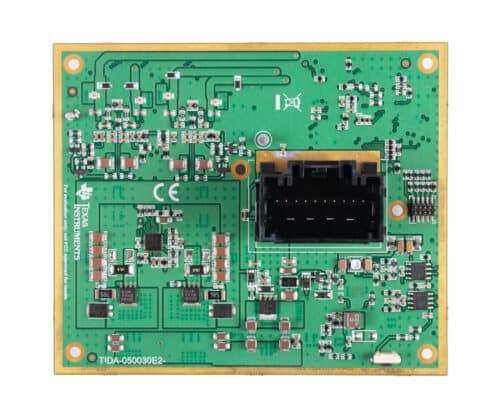Headlight ECU design features an interleaved boost for matrix control, four buck channels, 120W output, and thermal management for automotive lighting.

The Engine Control Unit (ECU) is a vital component in modern vehicles, responsible for managing the engine’s performance, fuel efficiency, and emissions. The ECU ensures optimal engine operation by controlling aspects like fuel injection, ignition timing, and idle speed. Additionally, it monitors various sensors to detect issues and adapt to changing conditions. In vehicles with automatic transmissions, the ECU also controls gear shifting. Furthermore, the ECU plays a crucial role in vehicle safety by managing features like ABS, TCS, and ESC. Overall, the ECU is essential for ensuring that vehicles operate efficiently, safely, and in compliance with emissions regulations.
The reference design, TIDA-050030 from Texas Instruments (TI), describes a headlight ECU using an interleaved boost in voltage regulation mode to power four synchronous buck channels. It supports matrix headlight control and is mounted on a heatsink and enclosure to simulate an automotive headlight ECU. The TPS92682-Q1 is configured as a two-phase interleaved boost controller in voltage regulation mode with a 130W output power capacity. Its boost output drives two dual-channel synchronous buck drivers, providing four buck channels with a 120W total output.
The design, mounted on a heatsink and enclosed, emulates an automotive headlight ECU. An MSP432 processor controls the TPS92682-Q1 and the two devices through the SPI interface. The MSP432 communicates with the master via CAN and the lighting matrix module using UART communications through a CAN transceiver. Bench-test results for this design include efficiency data, thermal measurements, pixel-controlled load data, and EMC measurements according to the CISPR 25 Class 5 conducted specification.
The system features four synchronous monolithic buck channels, each capable of driving dynamic LED loads with pixel-level control. Each buck channel can handle up to 1.5A/55W, resulting in a total ECU power output of 120W. Operating within a range of 9 to 24 V at full power, the system can also function with inputs as low as 6V, although with reduced power output. It incorporates an interleaved boost voltage system capable of delivering 130W. The system is housed in a full enclosure, leveraging the top exposed pad of the buck for high power density and shielding. Control is achieved via a CAN interface, providing flexibility and ease of integration with other systems.
The system finds applications in automotive lighting, including dynamic and static headlights and rear lights. The reference design incorporates a high-density, high-efficiency two-stage boost converter into multiple buck LED drivers, supporting four channels for an LED matrix manager with a total output power of 120 watts.
TI has tested this reference design. It comes with a Bill of Material (BOM), schematics, PCB layout, Gerber files, etc. You can find additional data about the reference design on the company’s website. To read more about this reference design, click here.






